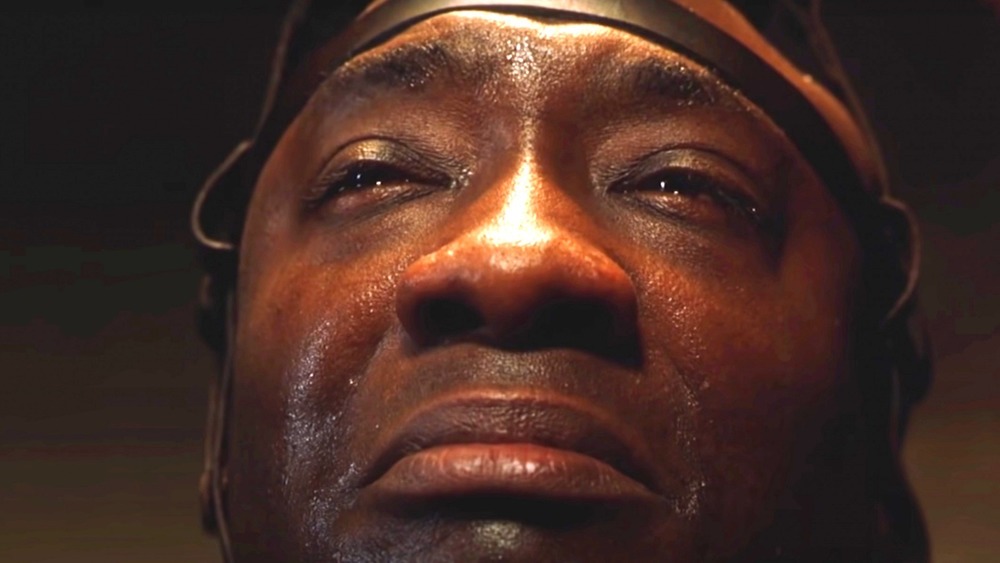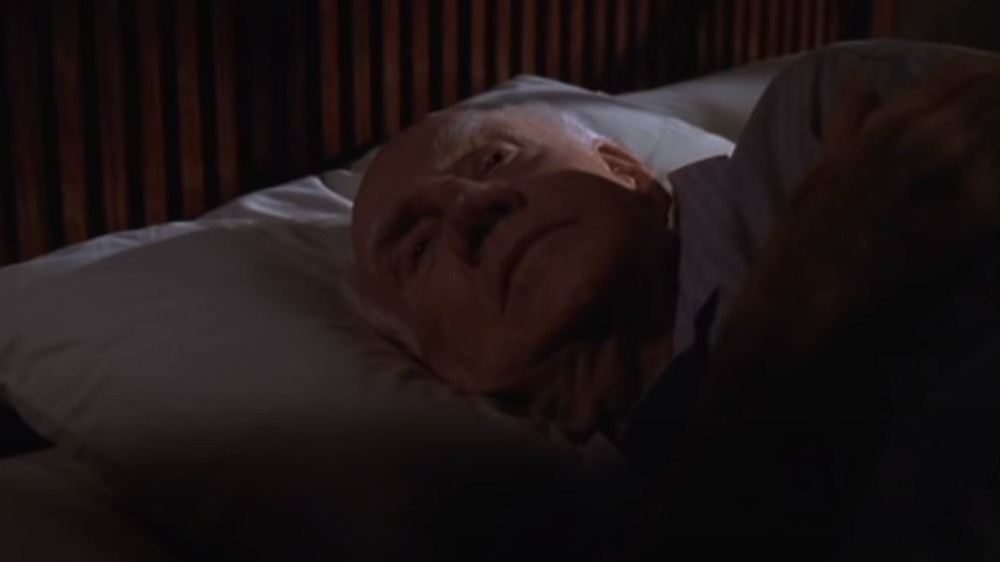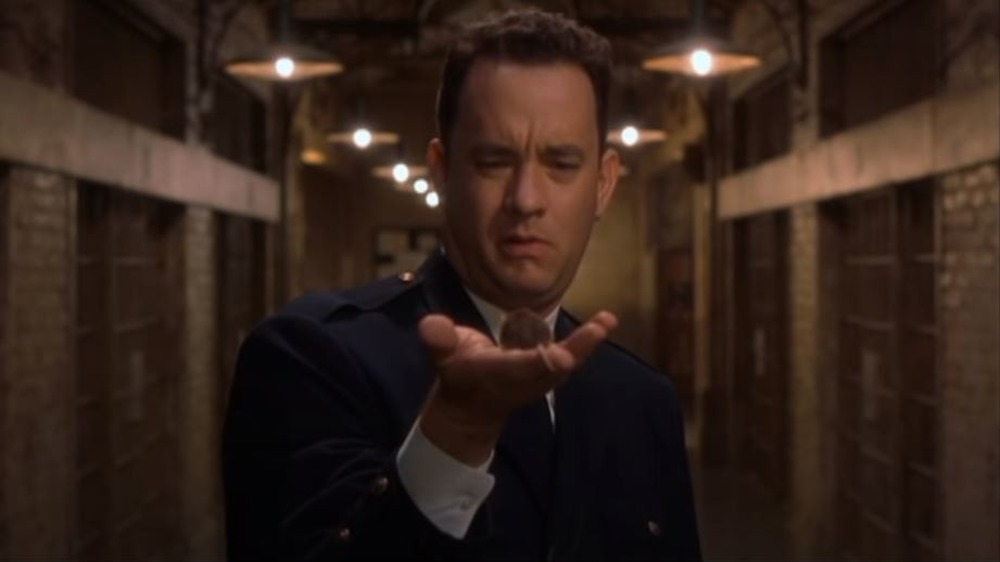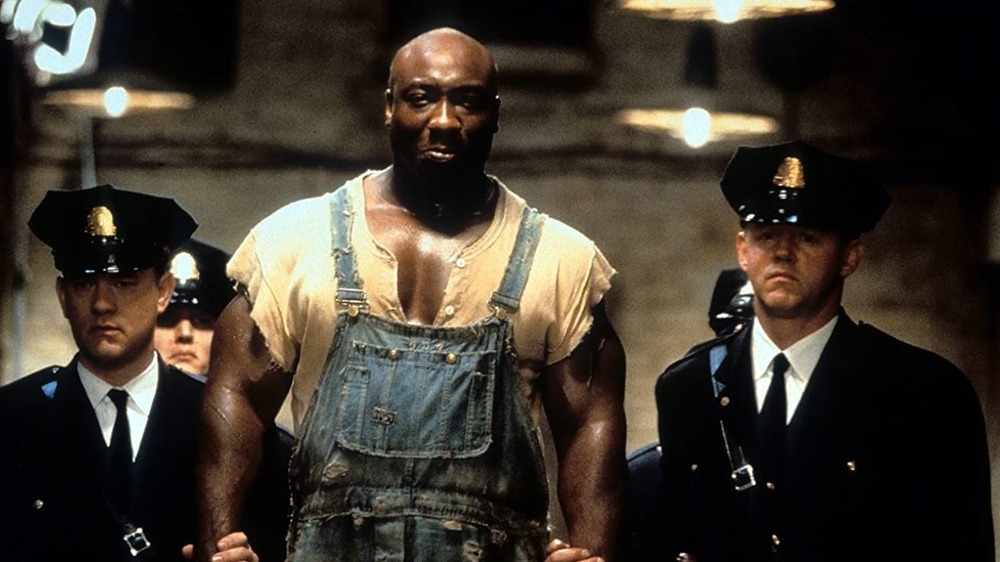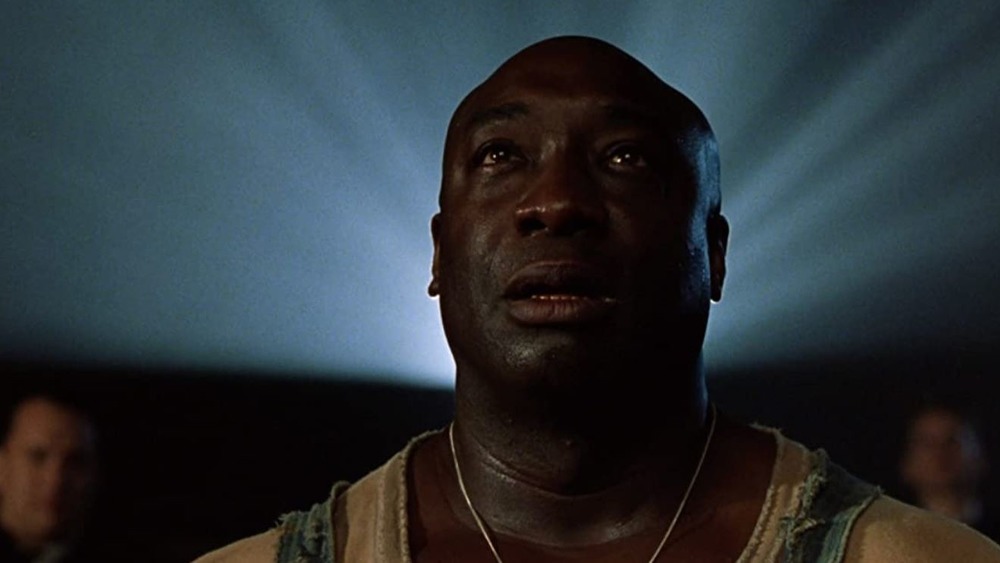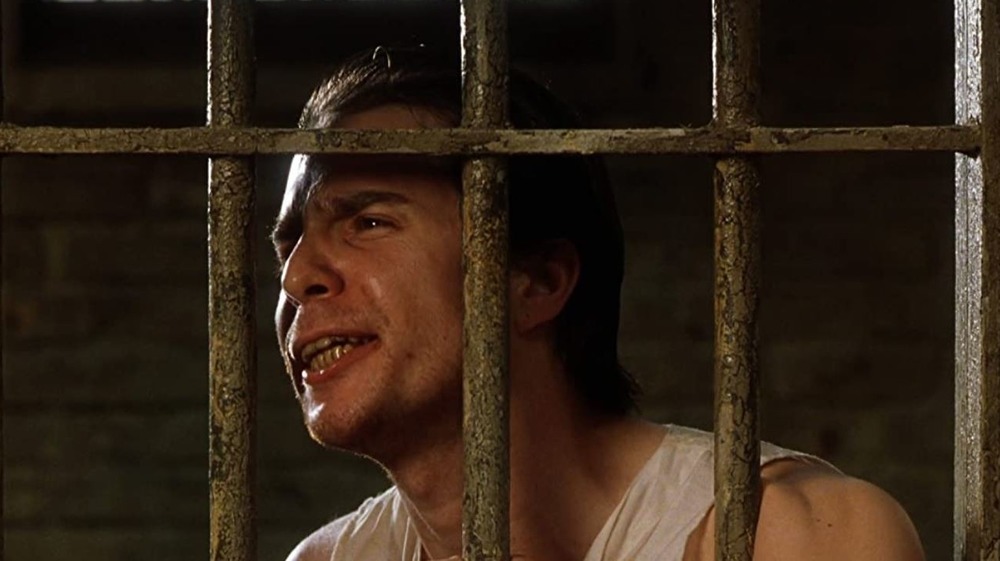How The Green Mile Is Different Than The Book
The Green Mile is a beautiful, touching movie, though it's good to remember that pretty much every way it touches you is of the "Bambi's mother dies" variety. Frank Darabont's 1999 death row fantasy drama is an adaptation of Stephen King's 1996 novel. It tells the story of Paul Edgecomb (Tom Hanks), a death row prison guard who befriends John Coffey (Michael Clarke Duncan), a giant inmate who's surprisingly gentle and mellow despite the horrific crimes he was sentenced to death for. As the elderly Paul (Dabbs Greer) recounts the tale in a nursing home, it becomes more and more fantastical, as it turns out that John has mysterious supernatural powers that affect the characters in many ways.
It's only to be expected that adapting a full-length novel into a 189-minute film requires some changes. For instance, the movie came out three years later than the book and adjusted its timelines accordingly. However, you might be surprised to find out just how much the two versions differ from each other in places. Let's take a look at how the movie version of The Green Mile is different than the book.
The book has an even sadder ending
The Green Mile is known for its devastating ending that almost makes the movie too sad to finish. There are no last-minute rescues or fun plot twists here as the innocent John Coffey has resigned to his impeding death and is executed in an electric chair. Around him, the guards try to hold back tears, not all of them succeeding. It's basically the polar opposite of a feel-good Disney movie ending ... so, of course, the book finds a way to make it even more depressing.
After the heartbreaking execution and some gloomy present-day dialogue at the retirement home, the movie ends with the elderly Paul outliving Elaine (Eve Brent) and musing on his apparent curse to live longer than anyone he cares about. The book follows similar general beats, except for one last gut punch. After Elaine dies, the reader finds out that Paul's wife, Jan (played by Bonnie Hunt in the movie), died in his arms after a dramatic bus accident in 1956 and that he experienced a vision of a ghostly John watching the scene. This powerful, tragic event adds an extra layer of terror and loneliness to the life of this old man, as well as a new aspect to John's otherworldly nature.
Mr. Jingles dies in the book
For a relatively slow-paced movie, The Green Mile features plenty of deaths and cruel fates. Inmate Eduard "Del" Delacroix (Michael Jeter) is by no means an innocent man, but his arc in the film wouldn't be out of place in a horror movie. Del becomes the target of cruel guard Percy Wetmore (Doug Hutchison), who breaks the prisoner's fingers and sabotages his execution to the tune of one of the most awful electric chair scenes ever filmed.
And then there's Del's pet mouse Mr. Jingles, which Percy kills. John famously resurrects the animal, and the movie ends with the shock reveal that Mr. Jingles appears to be alive and well in the year 1999 — 64 years after the events at Cold Mountain Penitentiary. This is an absolutely impossible age for a mouse, which can live up to three years in laboratory conditions (per Encyclopedia Britannica). It's also a truly terrifying prospect for Paul, who's over 100 years old and has also been infused with John's energies. After all, the mouse's continued existence means that he, too, might live indefinitely, while still getting physically older and older.
In the book, Mr. Jingles is still alive during Paul's time in the retirement home. However, as a small, sad ray of hope, it dies shortly before Elaine does. So, while Mr. Jingles and Paul both have unnaturally long life spans, there's an implication that Paul won't have to endure his lonely existence for all eternity.
John Coffey is even bigger in the book
It's almost impossible to imagine anyone else but the late, great Michael Clarke Duncan as John Coffey, the massive yet gentle death row inmate. Even so, the hulking actor can't quite fill the dungarees of the book version of the character. In the novel, the doomed giant is an imposing, 6'8" man-mountain, which is enough to dwarf even the 6'5" Duncan.
In fact, there may be some strange parallel universe in which Duncan never played the role. According to George Beahm's book Stephen King from A to Z, the author originally envisioned basketball maestro Shaquille O'Neal as John Coffey. While the 7'1" (via Basketball-Reference.com) Shaq would doubtlessly have been an excellent physical fit for the role, it might have been a bit distracting to see the NBA legend in the film. Besides, for a performance like Duncan's, it's well worth shaving a few inches off the character.
The film Top Hat isn't in the book
The 1935 Fred Astaire-Ginger Rogers joint Top Hat is responsible for The Green Mile's first tearjerker at the very beginning of the movie and kicks off the movie's climactic series of heartbreaking scenes. Top Hat shakes up the elderly Paul in 1999, prompting him to recount the events of the past to Elaine. Later, we see the guards solemnly watch the movie with John just before his execution, after finding out that the inmate has never seen a film in his life.
It's an incredibly touching scene that provides poor John a measure of wonder and whimsy — as well as gives the filmmakers a nice opportunity to frame a projector halo around the saintly man's head. However, don't expect to find it in the book. Instead of a spoken tale, King frames the story as a memoir Paul is writing before giving the finished pages for Elaine to read. As such, there's no real need to jump-start the story with the first Top Hat scene. Besides, the prison scenes of the book version happen in 1932, when the movie wasn't out yet.
The movie omits one of the book's most awful characters
The Green Mile has two notable antagonists. Wild Bill Wharton (Sam Rockwell) is an absolute, unrepentant monster who secretly committed the terrifying crimes John is accused of. Meanwhile, Percy Wetmore is a spoiled rich kid guard with a mean streak and a penchant for sadism. John ends up taking care of both characters by transferring Melinda Moores' (Patricia Clarkson) brain tumor to Percy, which causes the guard to shoot Wharton and get locked up in an asylum.
Meanwhile, the book features a third villain in the "old Paul" part of the story. Brad Dolan is an orderly at the retirement home and shares many traits with the ruthless Percy — only, he's far more of a direct threat for the frail Paul, whom he harasses with abandon. Fortunately, Elaine eventually puts Dolan in his place by revealing that her grandson is a powerful state-level politician who can cause serious problems for care home employees who don't behave.
